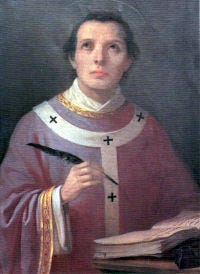The Education of Anselm of Canterbury

From the "Introduction" to the Oxford World's Classic edition of Anselm's major works(Anselm of Canterbury: The Major Works). The Introduction was written by Brian Davies and Gillian Evans.
As sources for his thinking, Anselm had the incomparable riches of the Bible and the writings of Augustine and other Western Fathers, such as Jerome (c. 342–420), Gregory the Great (540–604), and Bede (c. 673–735). He also had the advantage of ten years at Bec to read and absorb them before he began to write. The mode of reading taught in monastic schools was lectio divine, a slow, patient, reflective 'chewing' and ruminating which made texts so studied ineradicably part of the furnishings of the minds which thus absorbed them. Anselm was unusual in that he responded not by quoting and citing authors he read as 'authorities', strung respectfully together, but by using them as points of departure for his own often wholly original thought.
Anselm had a remarkably limited range of books to draw upon in forming his mind as a philosopher. He lived at a period before even a complete set of the works of Aristotle on logic, let alone those on scientific subjects, was available in Latin, and he had no opportunity to learn Greek. There was almost no direct access to the other fundamental source of ancient Greek philosophy, Plato, except Calcidius' commentary on the Timaues, and it is far from certain that Anselm can have read that. There was, however, a great deal of Platonism to be had, especially in the ideas transmitted by Augustine. And Anselm responded warmly and naturally to a Platonic way of thinking about the nature of reality. (xxi)


